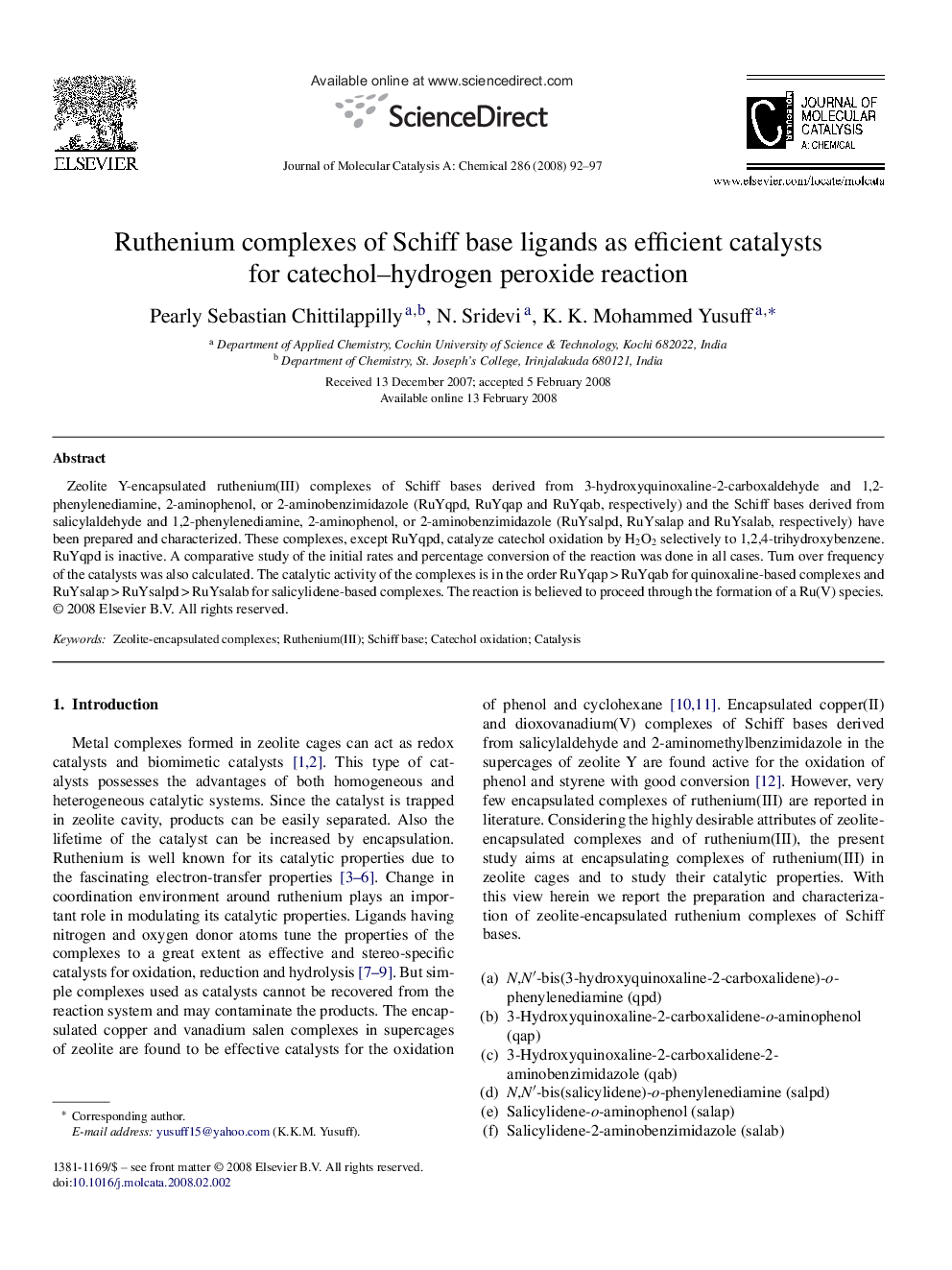| کد مقاله | کد نشریه | سال انتشار | مقاله انگلیسی | نسخه تمام متن |
|---|---|---|---|---|
| 67691 | 48491 | 2008 | 6 صفحه PDF | دانلود رایگان |

Zeolite Y-encapsulated ruthenium(III) complexes of Schiff bases derived from 3-hydroxyquinoxaline-2-carboxaldehyde and 1,2-phenylenediamine, 2-aminophenol, or 2-aminobenzimidazole (RuYqpd, RuYqap and RuYqab, respectively) and the Schiff bases derived from salicylaldehyde and 1,2-phenylenediamine, 2-aminophenol, or 2-aminobenzimidazole (RuYsalpd, RuYsalap and RuYsalab, respectively) have been prepared and characterized. These complexes, except RuYqpd, catalyze catechol oxidation by H2O2 selectively to 1,2,4-trihydroxybenzene. RuYqpd is inactive. A comparative study of the initial rates and percentage conversion of the reaction was done in all cases. Turn over frequency of the catalysts was also calculated. The catalytic activity of the complexes is in the order RuYqap > RuYqab for quinoxaline-based complexes and RuYsalap > RuYsalpd > RuYsalab for salicylidene-based complexes. The reaction is believed to proceed through the formation of a Ru(V) species.
Zeolite Y-encapsulated ruthenium(III) complexes of Schiff bases derived from 3-hydroxyquinoxaline-2-carboxaldehyde and 1,2-phenylenediamine, 2-aminophenol, or 2-aminobenzimidazole (RuYqpd, RuYqap and RuYqab, respectively) and the Schiff bases derived from salicylaldehyde and 1,2-phenylenediamine, 2-aminophenol, or 2-aminobenzimidazole (RuYsalpd, RuYsalap and RuYsalab, respectively) have been prepared and characterized. These complexes except RuYqpd catalyze catechol oxidation by H2O2 selectively to 1,2,4-trihydroxybenzene. A comparative study in terms of initial rates, percentage conversion of the reaction and turn over frequency of the catalysts was done. The reaction is believed to proceed through the formation of Ru(V).Figure optionsDownload as PowerPoint slide
Journal: Journal of Molecular Catalysis A: Chemical - Volume 286, Issues 1–2, 1 May 2008, Pages 92–97